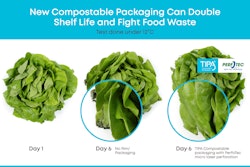
In the United States, food waste is estimated at between 30-40% of the food supply. Anytime a material balance calculation is done across a manufacturing plant, for example in food production, you’ll see the bins of waste because of misshaped product, poor texture or irregular-size problems. Yield or quality improvements in manufacturing are the central preoccupation of the production department. A lot of yield problems come from overfills and product change overs for which more exacting measurement and control can help considerably. Other problems come from the variability of ingredients used as the input to the process and temperature control across production.
According to the USDA, between the farm gate and retail stages, food loss can arise from problems during drying, milling, transporting or processing. The issue that arises when it comes to food loss issues within the plant is that you can’t locate where problems are coming from if you don’t account for and link information that shows the interconnections across the business. Detecting upstream indicators using material sensing in a process can provide advanced insights regarding when and where there will be problems further down the line.
The use of process optimizers or advanced controls have been employed within the four walls of a plant to reduce waste and provide savings in energy usage, catalyst, fill or product size for years. What needs to happen moving forward is more companies need to take a look at the broader value chain, from farm to table and all of the losses across the entire chain. Few companies have instituted optimization applications across the entire value chain to see where micro-wastes are generated that rob the company of profit and may affect customer perception of your brand.
Another common issue is the control of product loss at transfer points through the supply chain. By providing an ability to account for mass, volume and weight changes across transfer points, losses can be accounted for. By monitoring process parameters in association with this, a data repository can be created to provide a model of good vs abnormal operations. Analytic applications can run to find associations, such as air pressure in automated material handling systems vs. loss rates due to underfill in bagging operations. This could lead to the need to improve maintenance practices or put more automation in place to measure and alarm on specific parameters.
How to optimize yield
Sometimes, figuring out what is causing a yield and/or quality problem can be difficult, but often, it is a very process specific and can be tied in with ingredients. Another partially ambiguous loss area—or one that may be harder to pinpoint—is the actual effect of varying raw material specifications on finished products. For example, in baking, slight fluctuations in protein in the flour affect yield. This can be hard to determine if the specifications aren’t tied to the origination lot digitally.
What methods or systems should manufacturers employ to find and fix yield issues? One method would be to try collecting key information like set points, temperatures, weights, flows, counts, etc. across the supply chain and linking it by time, event and mixture information.
A mass-balance reporting system that encompasses the entire value chain, from bulk material transportation to finished product warehousing is another method that can track and quantify product yield. Typical reports measures yield in terms of units relevant to the corresponding supply chain area, mass-balance reports compute yield in units of mass. This gives a more accurate picture of the process yield, especially if a precise, real-time measurement of the product density is available.
Importance of material traceability
The technology behind material traceability can provide an unprecedented ability to supervise development cycles, monitor inventories and manage warehouses. These advances have led Forrester to predict a refortification of supply chains in 2021 and 2022 due to manufacturers pooling their data, making investments in logistics operation centers and lending their confidence to a growing number of supplier trust networks. Seeing how fragile the supply chain was against a disruption the size and scope of the Coronavirus disease (COVID-19) highlights the importance that manufacturers stay as flexible as possible when circumstances demand it. The more they can control beyond equipment uptime — materials traceability in particular — the better off they’ll be during the next unforeseen event. Forrester, in fact, predicts 20% of businesses will replace their disaster-recovery plan with a resilience strategy in 2021.
By incorporating a real-time, material-centric view, companies can collect, model, create and deliver from farm to fork to eliminate recalls, maximize throughput and enhance sustainability. This system utilizes data across the value chain from existing sensors, Internet of Things (IoT) devices and business systems, so that a prohibitive hardware investment is not necessary. And, using an artificial intelligence markup language (AIML), we can identify material movements, correlations and root causes, which leads to a fact-based trustable provenance of data.
By aggregating these tools to unify the disparate systems we’re used to managing ad hoc across the entire supply chain — from raw material collection, processing, transportation, manufacturing, distribution, all the way to consumers — the resulting data leads to a more efficient and productive supply chain.


















